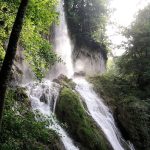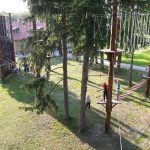May 28, 2018 – Continuing our closer look at the tourist destinations of Croatia, Senka Vlahovic takes us on in-depth tour of the heartland of Slavonia – the city of Osijek.
The city of Osijek is the city I really love. It was kind of hard for me to write about it as I felt restless, fearing it will not be good enough, interesting enough, that I shall not manage to express my feelings in the way I wanted.
I still think it is not perfect enough, but I reminded myself that love doesn’t ask for perfection. I honestly hope this article will motivate you to visit Osijek or if you already did, you will decide to visit it again and explore a bit more.
So, here we go. What’s to know about Osijek?
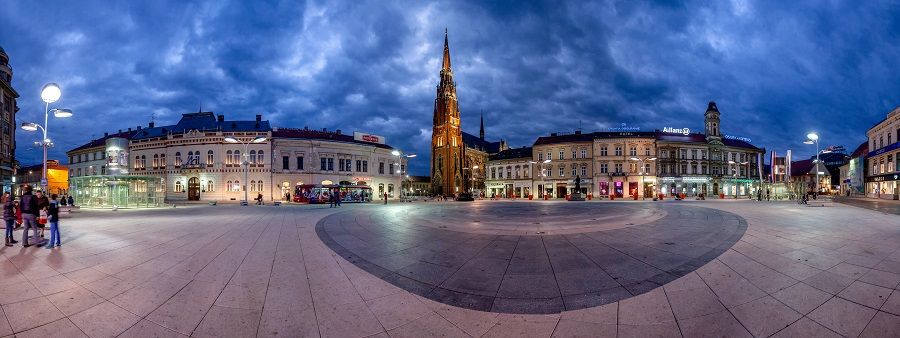
1. The picturesque location on the Drava river
The city of Osijek is a central European city placed in north-east Croatia, on the right bank of the Drava river in the region called Slavonia. It is the largest city in eastern Croatia and it is an administrative, educational, health, industrial and cultural centre of Osijek-Baranja county too. It is surrounded by three neighbouring countries of Hungary (50 km away), Serbia (35 km away) and Bosnia and Herzegovina (100km away). The Drava River has the status of an international waterway from Osijek to the estuary into the Danube river on 22 km long part.
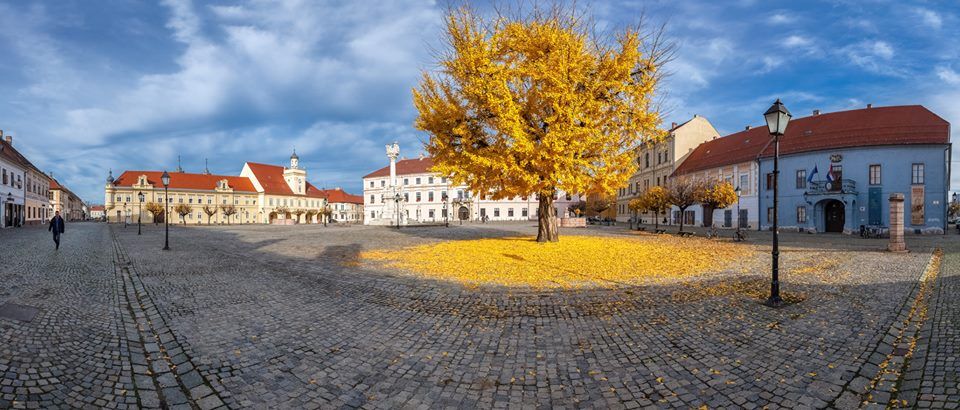
2. Pannonians and Celts were the first inhabitants of Osijek
The native tribe of Pannonians were conquered by Celts in the 4th century BCE. The community of native tribes and Celts was named Scordisci with the Celtic dominance of their culture. Their settlement was placed in the Lower Town, i.e. Donji grad, one of the city boroughs today.
Unfortunately, most of this settlement was destroyed due to the later buildings of Roman settlement Mursa and Lower Town of Osijek in the 17th century. For those who would like to see Celtic jewellery, pots, weapons, or wants to know more about Osijek history, I suggest a visit to the Museum of Slavonia and Archeological Museum, both situated in the centre of the old, baroque part of the city, Tvrđa.
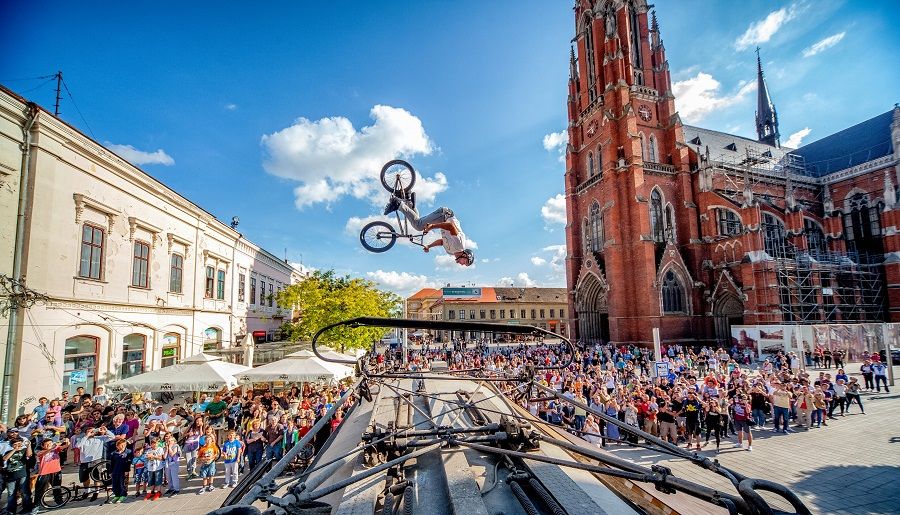
3. The cycling city of Croatia
How else to call the city with more than 40 km of cycling trails all over it? The city that is also a home to the largest extreme sports event in the region – the Pannonian Challenge which includes, among others, competitions in BMX and Mountain biking? How cool is that? This year, the 19th Pannonian challenge will be held on May 30 and will last until June 2. You can take a glimpse of how great this event is in the video. Osijek is also located on several international cycling routes like the European cycle route network EuroVelo 6 that connects Atlantic with the Black Sea, the Danube cycling route and the Pannonian Peace Trail. The Tour of Croatia 2018 started in Osijek too.
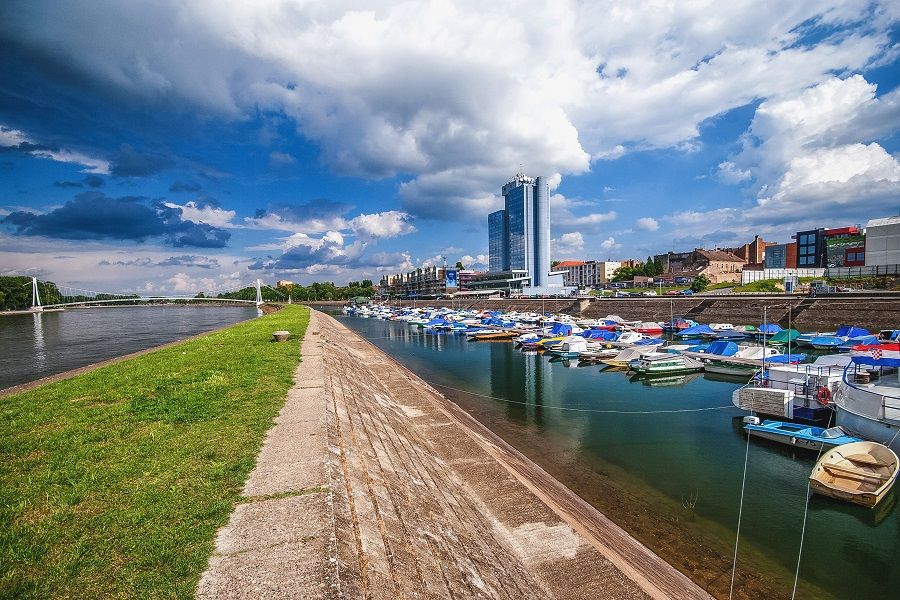
4. The longest and the most beautiful river promenade in Croatia
Osijek is situated on the right bank of the Drava river where the city promenade is also located. But, if you want to enjoy a full view of the city, you can also cross one of the bridges and take a walk on the promenade on the left bank as well. The promenade consists of a nice, wide walking path and cycling trail decorated with street plants on the side. Depending on how long you can walk, you can enjoy the view of the river, winter port, three bridges and parks. In case you need a little break, there are benches along the promenade or you can stop for a coffee in one of the cafe bars and restaurants placed on the route and on the river ships.
(Beer tasting pub Gajba)
5. The oldest brewing in Croatia
The first breweries appeared in the city of Osijek in the 17th century, probably due to the Germans who were moving to Slavonia in those times. The first documented proof of brewing in Osijek is linked to Mr Bauer, who brewed beer in 1664. The biggest beer fans and consumers were the soldiers placed in the part of the city called Tvrđa (fortress). „The First Slavonian Steam Brewery and Ice Factory“ was founded by Caetano Šeper in 1856 who learned his brewing trade in the Czech Republic and Austria. If you are a beer lover, don’t miss a visit to one of the beer pubs and traditional Osijek Craft Beer Festival. My favourite place is the beer tasting pub, called Gajba.
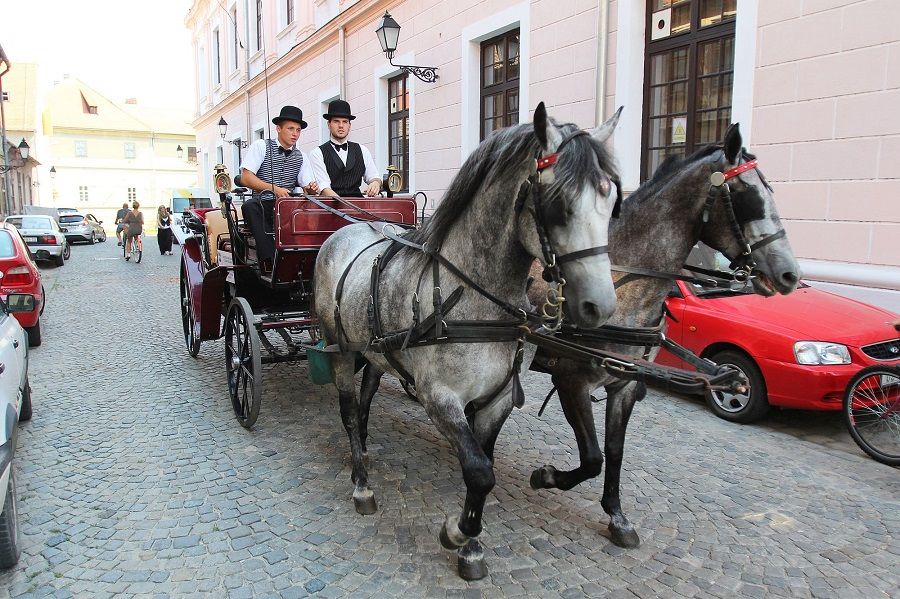
6. Osijek’s slang and Esseker dialect
Many people will not know the difference between Osijek’s slang and Esseker dialect and many wouldn’t be able to understand what are they saying. Esseker dialect appeared in the 17th century after mass immigration of Austrians and Germans in Osijek. It was used regularly by common people in the 18th and 19th century. It is mostly a Germanic language with traces of Hungarian and even Turkish words. In short, the Esseker dialect is the mix of several languages young people from Osijek probably wouldn’t be able to understand today. I still have to think twice when I ask my mum about the time and she replies: it’s three ‘frtalja’ (quarters) four. I am more of this Osijek’s slang generation. As the Esseker dialect was used mostly until WW II, Osijek slang started to develop some time afterwarrds, I would say and it is full of metaphors and improvisation in conversation. Examples of a few slang words: lega (shorter from colleague), rođoš (shorter from rođendan/birthday), nogoš (shorter from nogomet/ football), čvimba ( pimple) etc.
(Osijek Tourist Board)
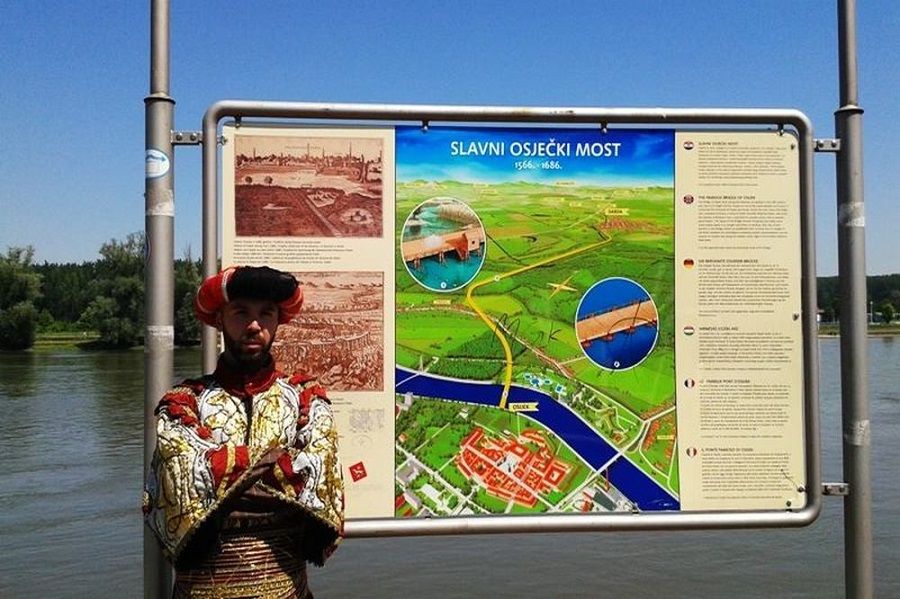
(Putovanja Slavonijom)
7. The famous Suleiman bridge
The first construction of the bridge began on the orders of Suleiman the Magnificent in 1526. It was reconstructed several times afterwards, as Suleiman ordered the destruction of the bridge after his troops passed as a symbol of plans not to retreat. The final, fourth version of the bridge was built in 1566 on Suleiman’s way to Vienna. It was an 8 km-long wooden bridge built from Osijek across the Drava river and the swamp in Baranja, to Darda in only 8 days. If you want to know more details and relive those times, on the theme tour around Tvrđa, Domagoj will definitely be the perfect person to do so. A photo of Domagoj in the role of Suleiman says more than a thousand words.
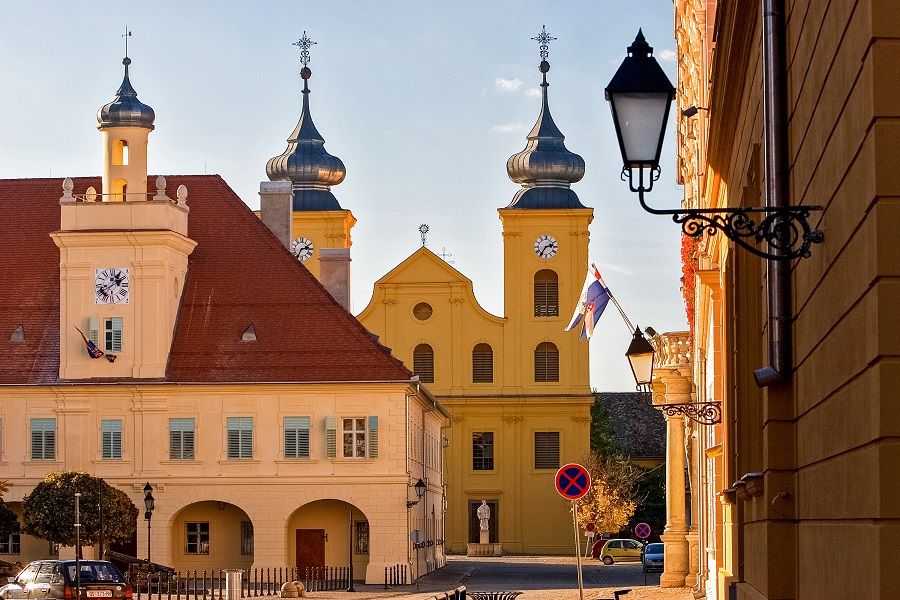
8. Tvrđa – the old baroque part of Osijek
Tvrđa, the old part of Osijek, is a combination of military, urban and sacral architecture. After Osijek was liberated from Ottomans in the 17th-century, the Austrians built new fortress walls under the supervision of the commander of the Osijek fortress Johann Stephan, Baron von Beckers in the 18th-century. The fort had four gates: New Gate (South), Water Gate (North), Emperor Gate (East) and Valpovo Gate (West). The only gate left today is the Water Gate. The gorgeous baroque statue of the Holy Trinity dominates the main square in Tvrđa. The 18th century church of St. Michael the Archangel has two 47 meters high tower bells that ring every Friday at 11 a.m. as a memory of the moment when Osijek was liberated from the Ottoman empire on September 29, 1687. The Tvrđa is actually a town within a city so there is so much more to see while wandering through its streets.
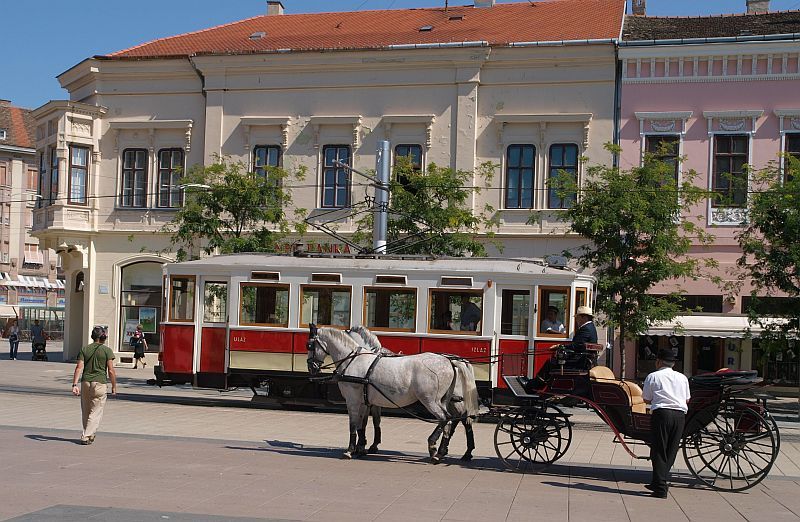
(Osijek Tourist Board)
9. The first tram in Croatia
Osijek was the first city in Croatia and this part of Central Europe to have modern urban transport. A horse-drawn tram started to operate on September 10th 1884 at the time when Osijek had some 18,000 inhabitants along a 10 km route from west to east.
The horse railway was connecting two parts of the city, today’s main city square and the Lower Town main square. It had 16 seats, and it was pulled by one or two horses which were exchanging every two hours and the speed of the horse tramcar was some 7 to 8 km/h. My grandmother used to go to the school by a horse tram and during the winter times, snow used to be so high that they had to go out of the tram to push it and help the horse to keep on going. Apparently, it was a great fun. The first electric tram ran in 1926. Today, one of those old trams, the tram no. 8 from 1928 is in care of Osijek’s public transportation system GPP d.o.o.
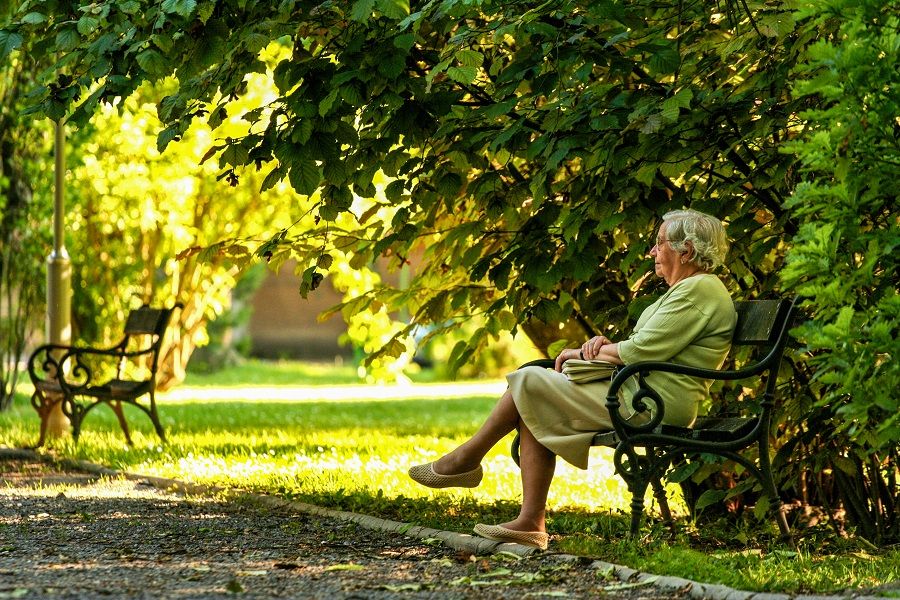
10. The greenest city – The city of parks
Osijek has 17 parks and a green area of 394,000 km² that has won the city of Osijek many awards over the years. In 1978, 1980 and 1982, Osijek was the triple winner of the former Croatian newspaper, Vjesnik’s Green Ribbon award. Also, in 2014, the journal Environmental Science & Technology from the UK published the study led by Dr. Mathew White, where Osijek was proclaimed to be the greenest city in Croatia. Apart from that technical information, the true green soul of Osijek hides in the beauty of parks, species of trees and shrubs you can see today and in the stories of the parks left to rest in the past.
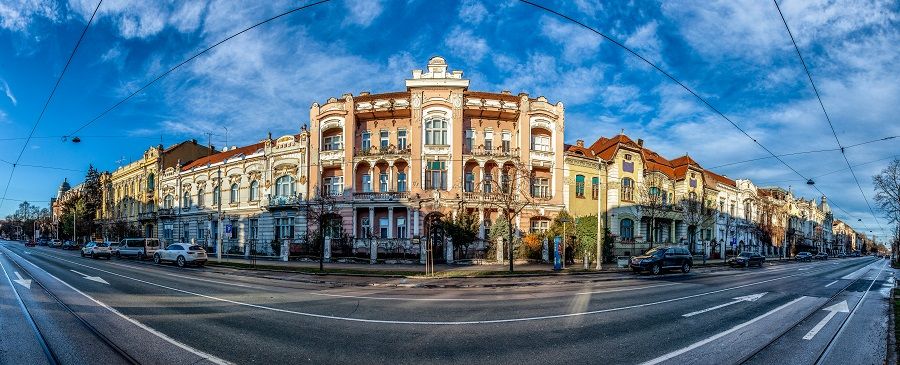
11. Architecture and Gorgeous Secession beauties of Osijek
The most beautiful houses in Osijek are definitely houses of Secession architecture. The best-known are the eight houses built in the row in European Avenue at the beginning of the 20th century.
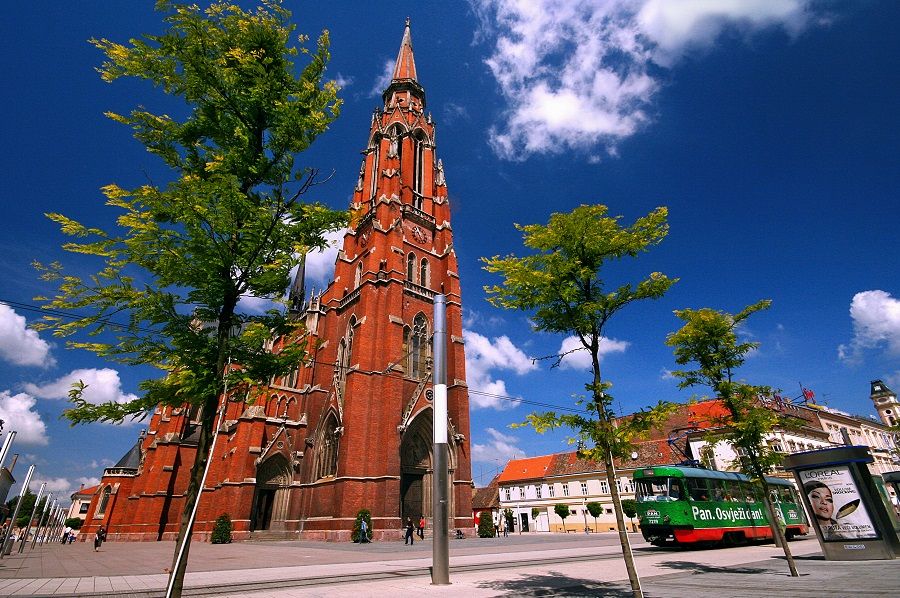
12. The second tallest church in Croatia and southeast Europe
The 19th-century neogothic co-cathedral of st. Peter and Paul in Osijek is 90 m tall and it is the second tallest church in Croatia and south-east Europe, right after Zagreb. ‘The father’ of this magnificent church is bishop Josip Juraj Strossmeyer. It was built with three million bricks and stone. The tower is divided into four galleries with four large bells. The smallest fifth bell is placed in the tower above the crest of the church.
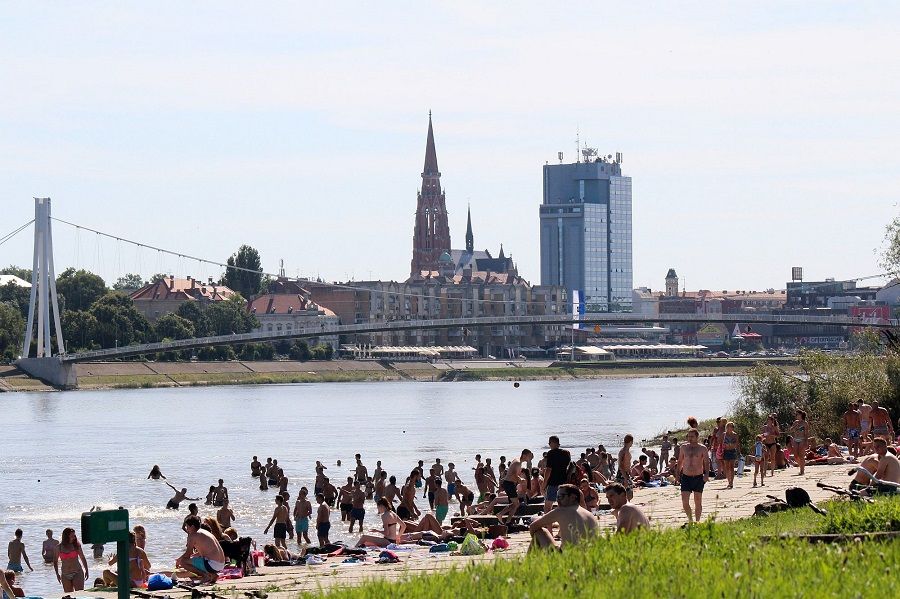
(Osijek Tourist Board)
13. Copacabana
To name a recreation centre on the Drava river after one of the most famous beaches in the world shows how witty Slavonians are. This Croatian Copacabana beach was built in 1965, and in the Osijek slang I mentioned before, it is known as Kopika. It is actually a recreational centre with sandy beach, several swimming pools, restaurant and other beach services and facilities.
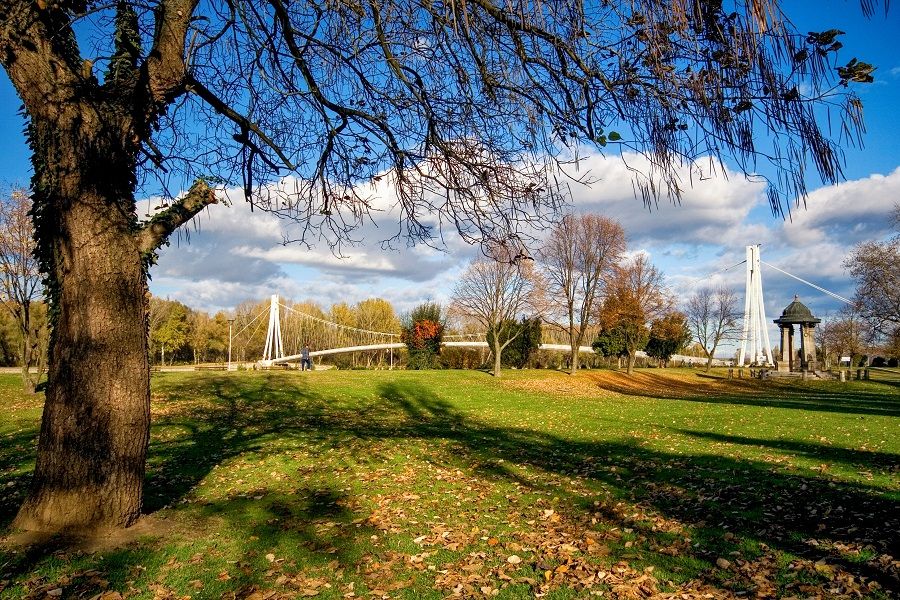
14. The most beautiful pedestrian bridge in Croatia by my choice
This bridge over the Drava river is one of the symbols that represent Osijek. It was opened in 1981 and completely renovated in 2007. It is 35 m high and 6 m wide and it is honestly one of the most beautiful bridges in Croatia. I would like you do not just trust me on this but you will come to see for yourself. The view on the bridge during the night is breathtaking.
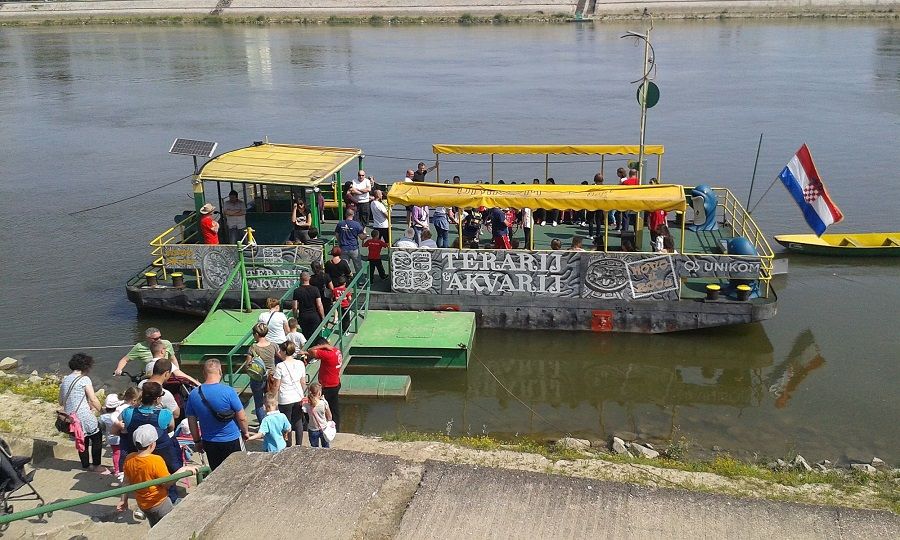
(Osijek Tourist Board)
15. The cable ferry over Drava river – Kompa
Bridges of Osijek are not the only ones that connect river Drava shores. The cable ferry over the Drava river has been operating in Osijek actually for quite a long time, all the way back to 1916. Writing this reminded me how long I haven’t crossed the river with kompa. I think more than 15 years. Kompa awoke nice memories from childhood as it was usually connected to the special occasions when we would take a bus to the center of the city, walk to the kompa, cross the river and go to the ZOO. Using kompa to cross the Drava river is a definitely one of those things you must do when in Osijek.

16. The biggest water mill in Croatia
Slavonia was always known as the golden land thanks to the golden fields of wheat. Not, only wheat, this land has always been great for growing many sorts of cereals, ever since the ancient times. So, it doesn’t surprise that there were many water mills on the Drava river, which reached their peak in the middle of the 19th century. The last water mill stopped working in 1944. Thanks to the replica of a water mill, opened in 2015, we can see and experience a little bit of Osijek past times.
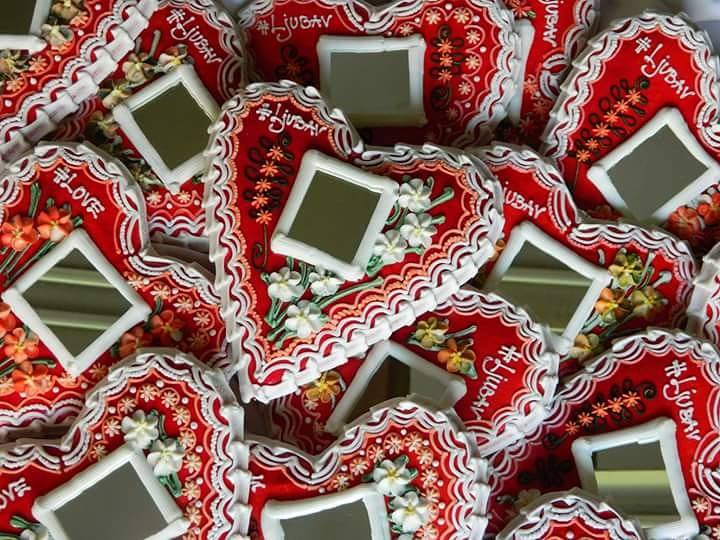
(Blazekovic Workshop)
17. UNESCO Gingerbread craft from Northern Croatia – Licitar
The gingerbread craft from Northern Croatia was inscribed on UNESCO’s Representative List of the Intangible Cultural Heritage of Humanity in 2010. The tradition of gingerbread craft goes all the way back to the 18th-century. One of the licitar workshops (the Blažeković workshop) is located in Osijek.
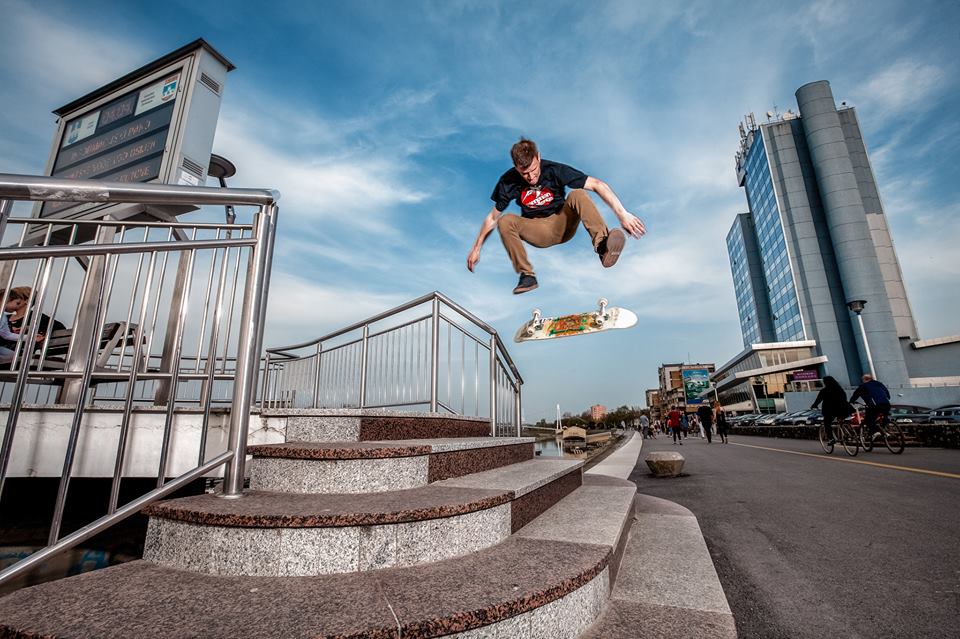
18. The long tradition of sports
The first sports association in Croatia was the Citizen Shooting Sports Association, established in Osijek 1784. The other sport associations followed: gymnastics in 1865, cycling 1866, rowing in 1892, hiking in 1895, chess since 1913, football since 1916 and many others.
Osijek has 208 different sports associations and a huge number of recreational sports activists.
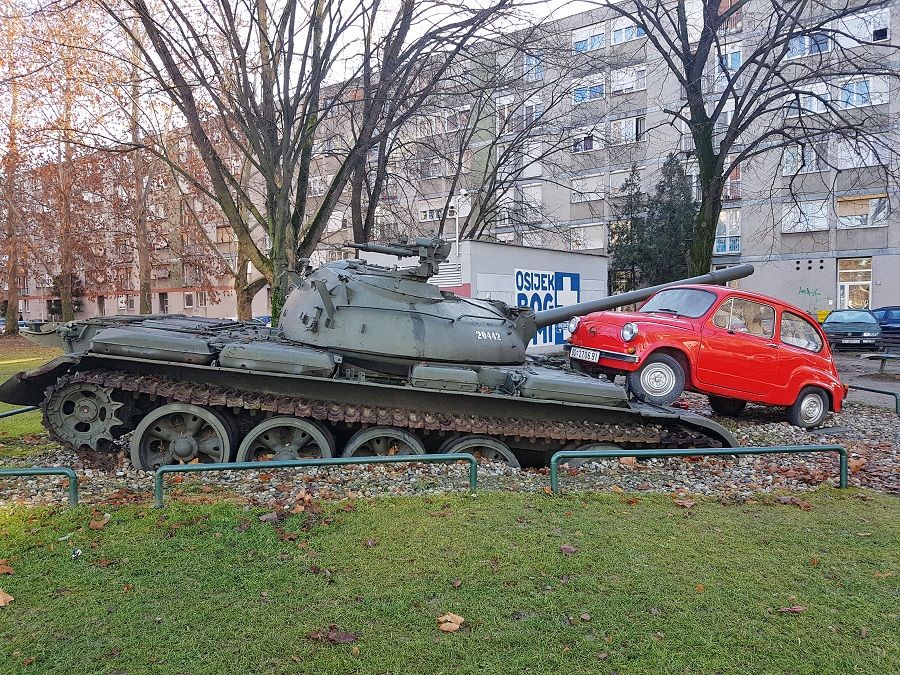
(Senka Vlahovic)
19. The little Red Fićo
Fićo stands for Zastava 750, a car known in former Yugoslavia that was produced under the Fiat 600 license in 1955. An art installation of The Red Fićo in Osijek represents a victory of small, ordinary people over much larger and powerful enemy aggressors. At the beginning of the Homeland war in Croatia, the tanks of the Yugoslav army and Serbian aggressor showed their evil intentions by crashing into the Red Fićo on the streets of Osijek on June 27 in 1991.
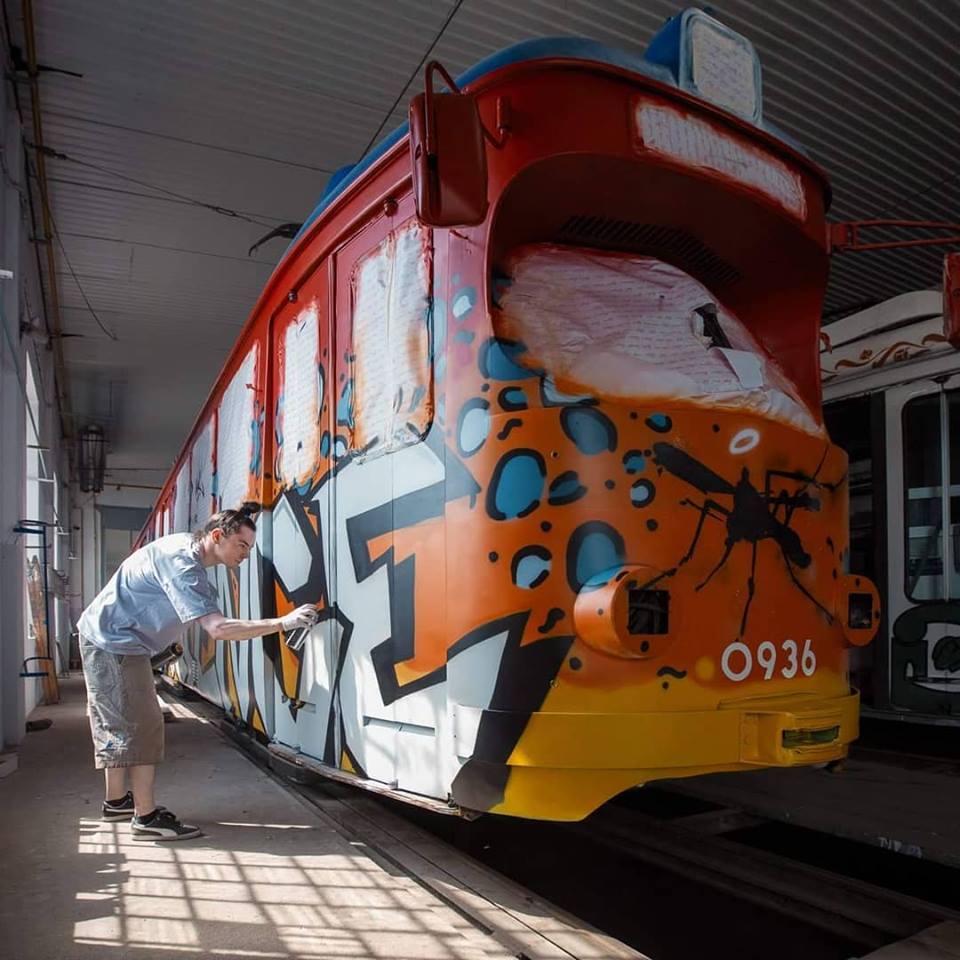
20. Urban art graffiti
The art of graffiti makes old houses and walls cheerful. In Osijek, trams too. The best-known graffiti location is the wall of Sugar Factory Osijek in the part of the city called Jug II. Osijek also has graffiti that is protected cultural heritage. It was written by the Croatian soldier Predrag Sušac during the Homeland war on the day when Vukovar was occupied and Osijek was under heavy armed attack. It says „Osijek nepokoreni grad“, meaning „Osijek Unconquered City“. The journey of Graffiti subculture in Osijek continues thanks to the members of the Original Skillz Hip-Hop Team and the legendary STW (South Two Writers) Crew.

21. The Mom cat – Mačkamama
A story of Mačkamama is the story of a peculiar Baroness Paulina Hermann. The Baroness lived in Osijek at the turn of the 20th century and lived a pretty spirited life. Paulina was married twice, first to Dragutin Hermann, a member of a rich Esseker family. The second husband was Austrian Baron Wessely. Most of her life is known from stories passed down, with little facts. So, the stories say that Paulina was a philanthropist, exceptionally social, loved parties and extravagant living. But, she also loved animals and apparently lived in her mansion with lots of them, mostly cats. The story says, that she owned a lion too. Her love for cats has got her a nickname Mačkamama, the Mom Cat. The oak statue of the Baroness by Mate Tijardović can be seen in the vicinity of her mansion in the part of Osijek called Bosutsko naselje.
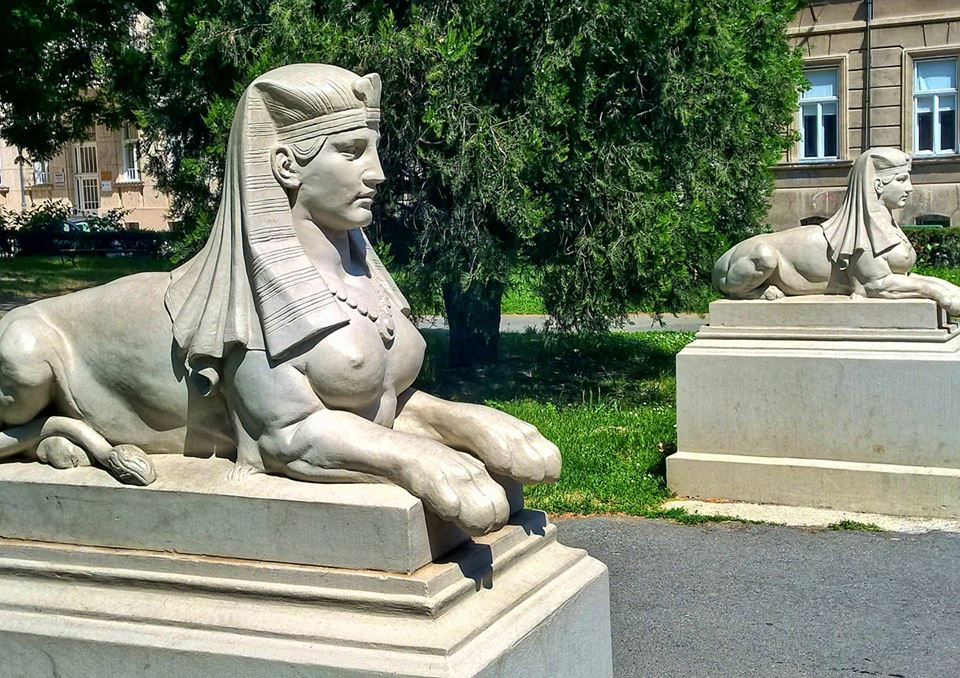
{Senka Vlahovic)
22. Sphinxes with the big boobies
I don’t know is there any other place in Croatia that has sphinx with big boobies but Osijek has two of them. During history, sphinxes used to be ‘in and out’ of the fashion in the European architecture design and obviously were ‘in’ again in the 19th-century as these two sphinxes were made in 1896 and placed in Sakuntala Park. In the time of romanticism and symbolism were more inspired by Greek than Egyptian sphinxes.
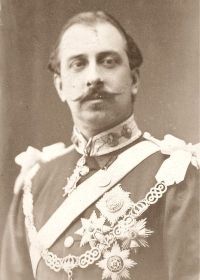
23. The great-grandfather of Queen Elizabeth II was born in Osijek
Franz Paul Karl Ludwig Alexander von Teck was the father of Queen Mary and great-grandfather of Queen Elizabeth II. He was born on August 28, 1837, in Osijek (then Esseg).
Prince of Wales and Duchess of Cornwall visited Osijek on March 15, 2016.
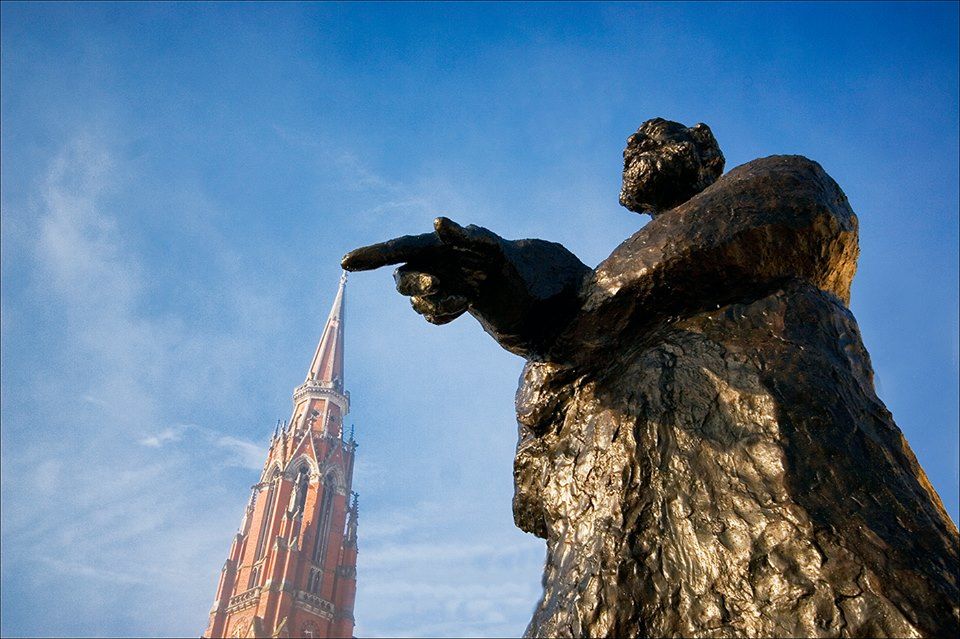
24. Things to do in Osijek
The first thing people connect to Slavonia is mostly food and wine. Which is ok, but please do not take that as the only reason why you should visit this part of Croatia. If the only reason is eating and drinking, it is cheaper to stay home. So, why should you visit Osijek and its county anyway? Please don’t mind if I just list several suggestions: visit old churches, galleries, Croatian National Theatre, events and festivals. Cultural lovers can discover more on exploring towns in Osijek-Baranja county like Đakovo, Našice, Donji Miholjac, Valpovo and Belišće discovering their cultural and natural heritage. I can feel some of you roll your eyes, just for you go another list: horseback riding, cycling, canoeing, swimming in the Drava river or city pools, birdwatching in the Nature Park Kopacki Rit enjoying the active time or just relaxing in the nature of Osijek surroundings. Dear food lovers, don’t fear, I shall not deny you for your love as Osijek and Slavonia are heavens for foodies. A little bit more about it goes on no. 25:
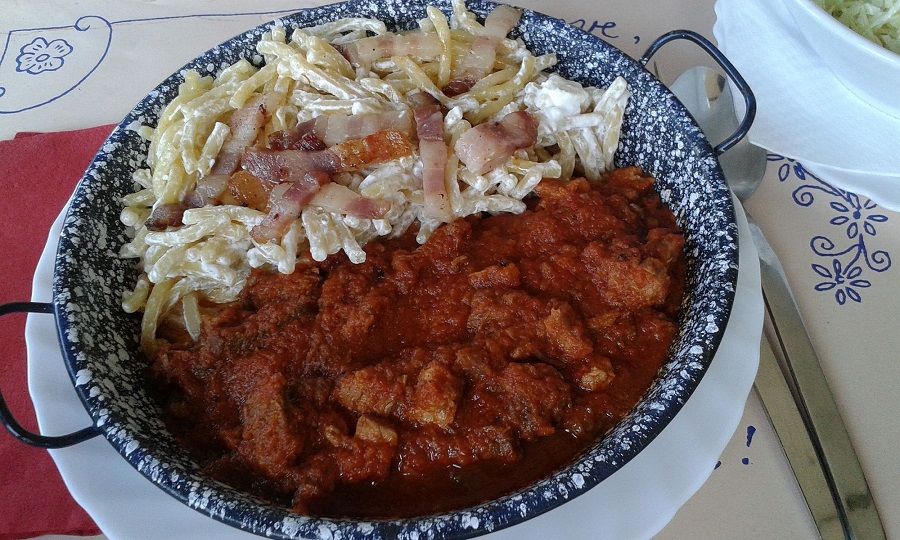
(Osijek Tourist Board)
25. Food & Drink
The geographical position of Osijek and Slavonia enabled this part of the country abundance in food, thanks to the forests, fertile fields and big rivers. Also, many cultures merged here for centuries influencing local cuisine. When in Osijek please do not stop on tasting just „Fiš paprikaš“ – the fish stew, „Čobanac“ – shepherd’s stew, and a spicy “Kulen” sausage. The wine offer is also very rich. Beer too. And not to forget, homemade spirits made of plum, sour cherry, pear and many other delicious fruits.
Osijek is my city of birth. I do not live in it for almost 20 years now but the feeling I belong to this city never left me. I am especially thankful to the people in Osijek who treat me the way like I never left, like I am still the part of its beat. Special thanks go to photographer Samir Kurtagic from Osijek who allowed me to use his photographies in this article and Mislav Pavosevic from Osijek Tourist Board.


